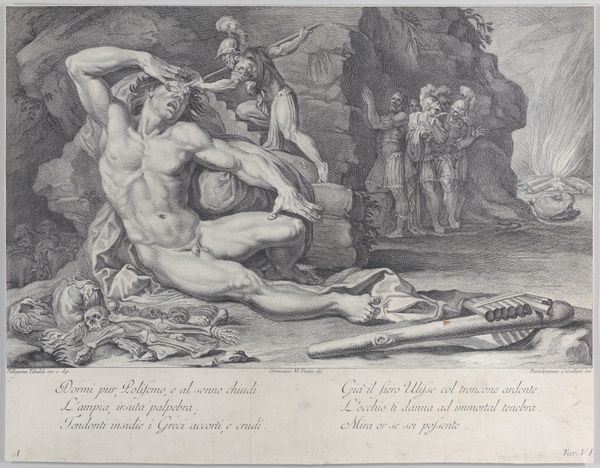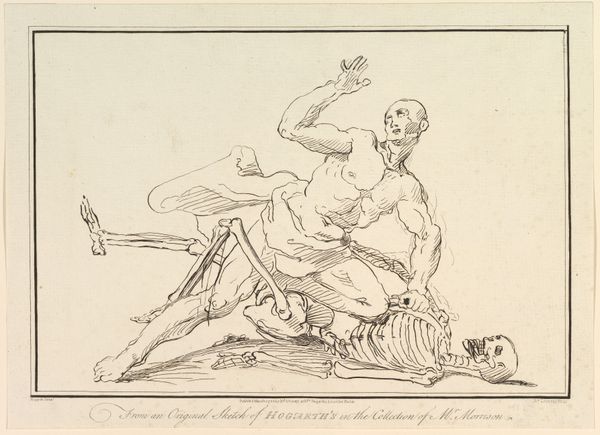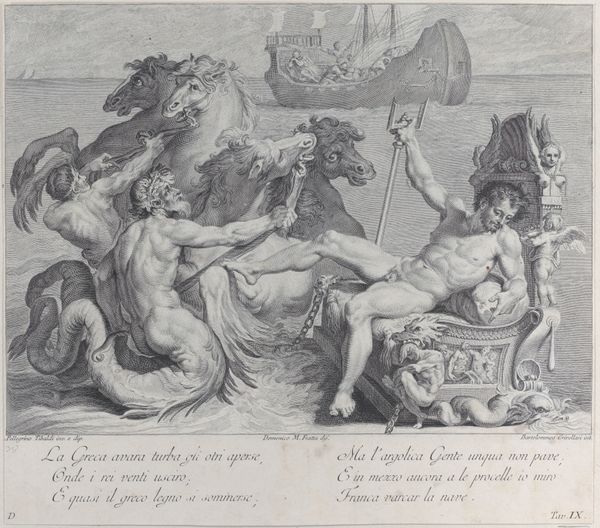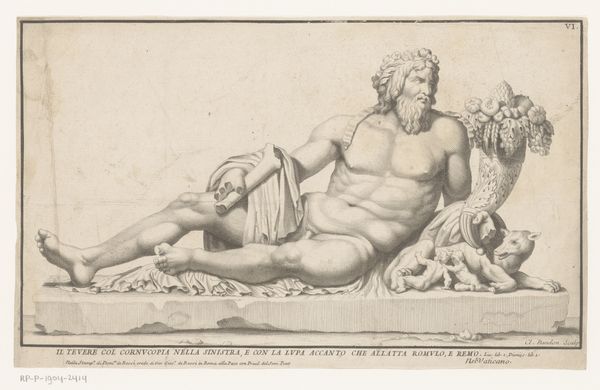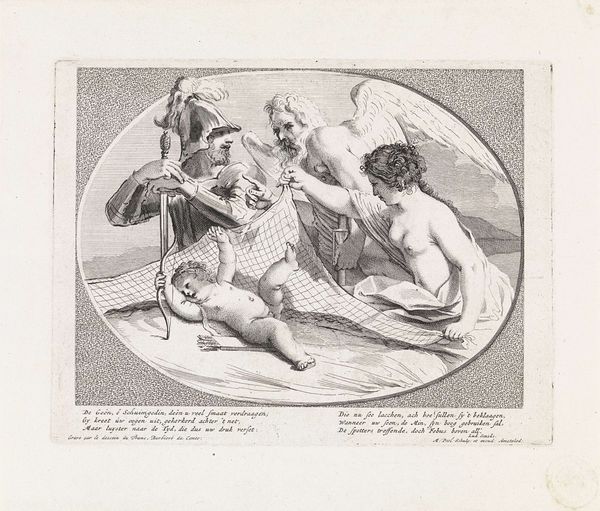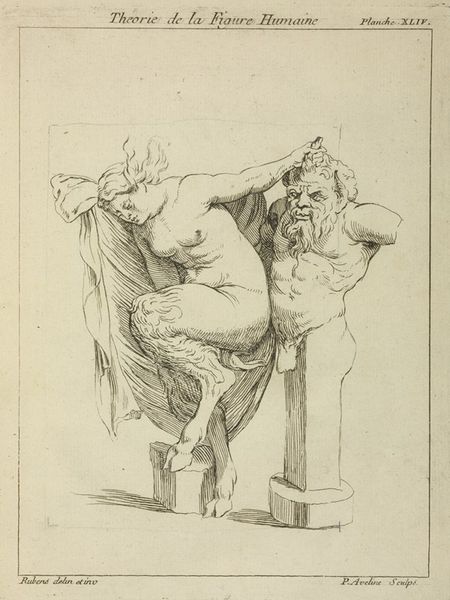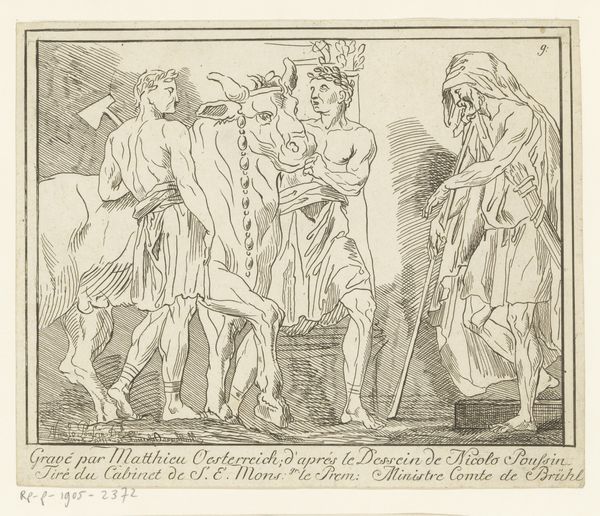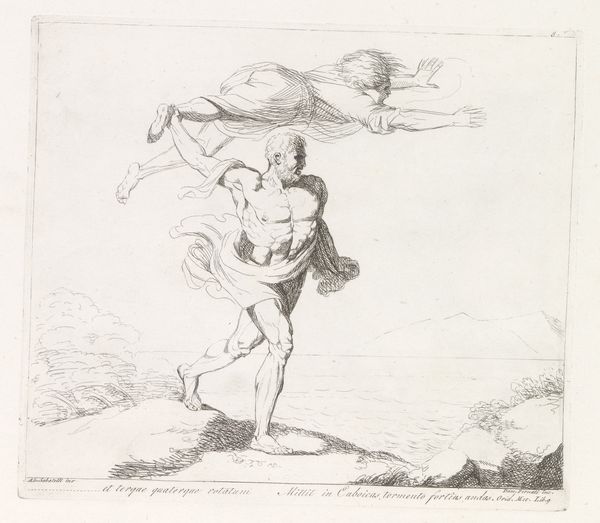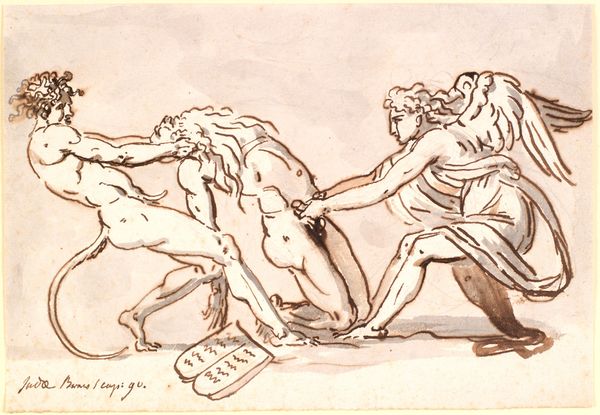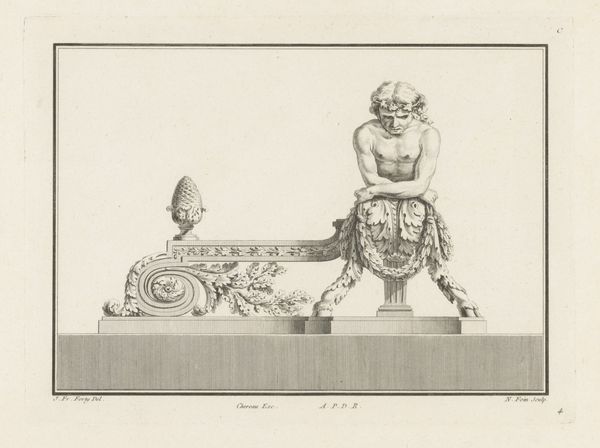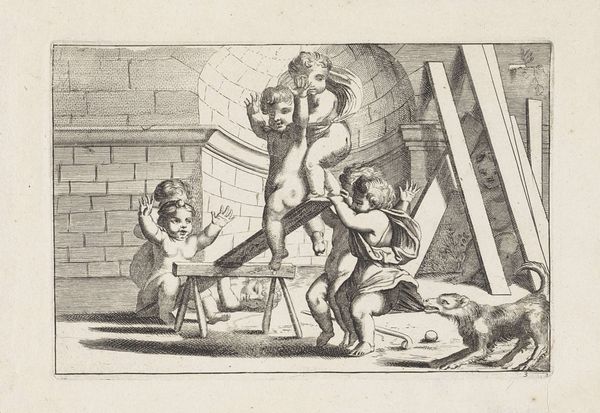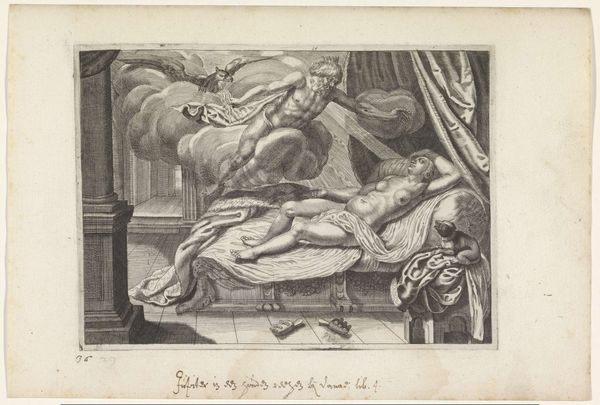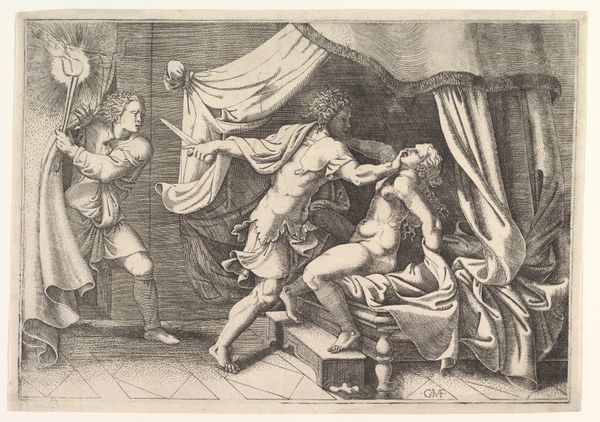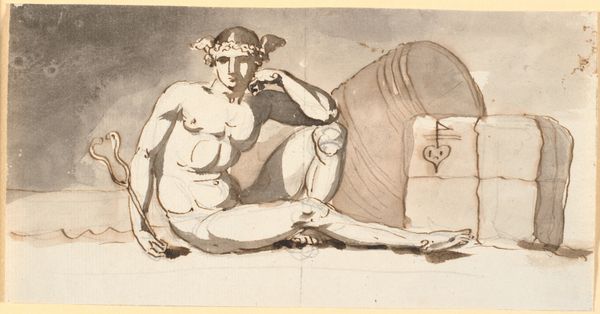
drawing, ink
#
drawing
#
neoclacissism
#
narrative-art
#
classical-realism
#
figuration
#
ink
#
history-painting
Copyright: Public domain
Curator: John Flaxman, a British artist deeply influenced by classical antiquity, created this pen and ink drawing, titled "Illustration to the Iliad," in 1795. The work exemplifies the Neoclassical style, which saw a resurgence of interest in Greek and Roman art and culture during the late 18th century. Editor: It strikes me as almost painfully spare. The clean, thin lines, the minimal shading... it's like a ghost of a memory, or perhaps an archeological drawing found on a vase. It really underscores the raw emotion of grief. Curator: Flaxman's commitment to line emphasizes clarity and form, values aligned with the Enlightenment ideals that underpin Neoclassicism. Flaxman was an instrumental artist, and it’s his style, which was emulated through prints such as this one that spread so much of Neoclassicism through Europe. Flaxman aimed to convey the moral grandeur and heroic ideals associated with the ancient world. His style has sometimes been criticized as cold or clinical, but that arguably reinforces how differently we approach images now to how the late 18th Century did. Editor: I think the spareness has its own eloquence. Like look at the figures huddled in despair; their forms echo each other almost, like waves of grief washing over them. And the fallen helmet. A single helmet can say so much about mortality, defeat…the brutal end of the human experiment, sometimes! I bet Sophocles would approve, anyway! Curator: Flaxman's "Iliad" illustrations became widely popular and influential, partly through engravings that circulated throughout Europe. They reflect a desire for a return to simplicity and order in art, in contrast to the perceived excesses of the Rococo style, and their impact can be felt throughout the later 18th and early 19th century cultural milieu. Editor: It’s odd, isn't it? How something so reduced, so minimal, can evoke such a depth of feeling, an immediacy of connection. A reminder perhaps that art's power isn't always in its grandeur, but its essence. And sometimes all it takes to summon up something ancient and true is a pot of ink and a well-sharpened nib! Curator: Indeed. Flaxman distilled an epic tale to its emotional core, reminding us of the enduring power of the classical narratives and their capacity to express universal human experiences. Editor: The simplicity serves the grand and profound. A pretty neat trick, really!
Comments
No comments
Be the first to comment and join the conversation on the ultimate creative platform.
